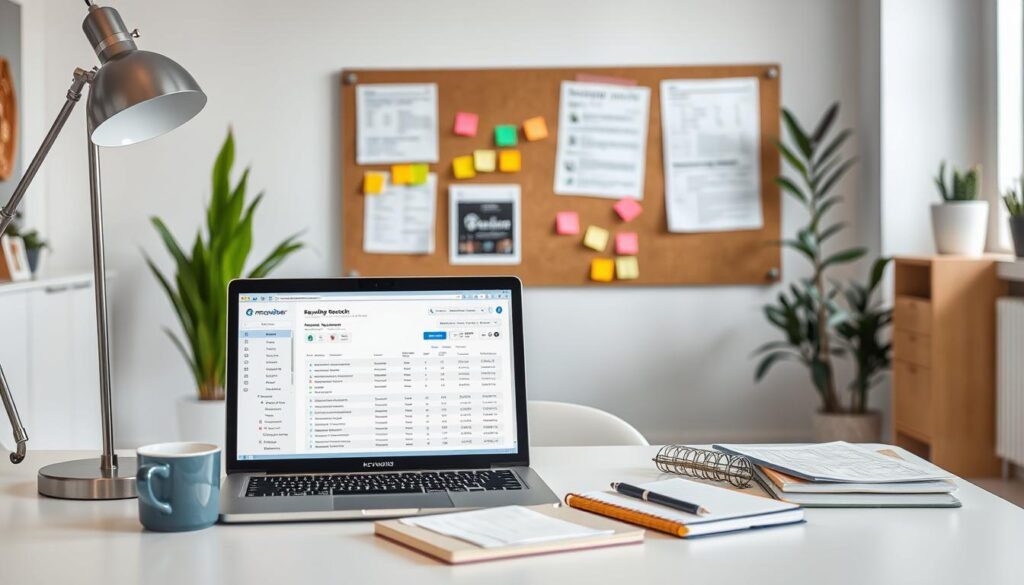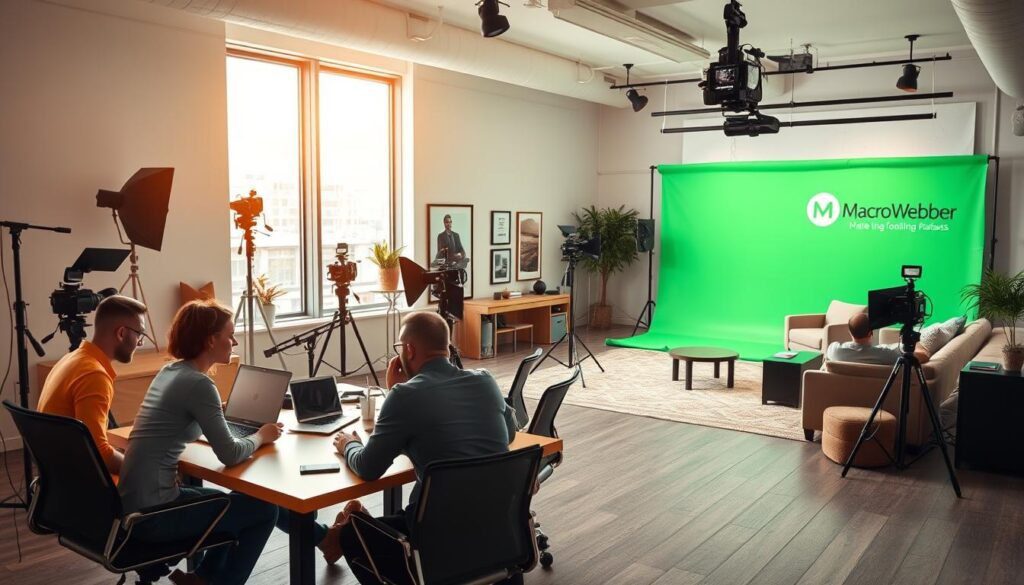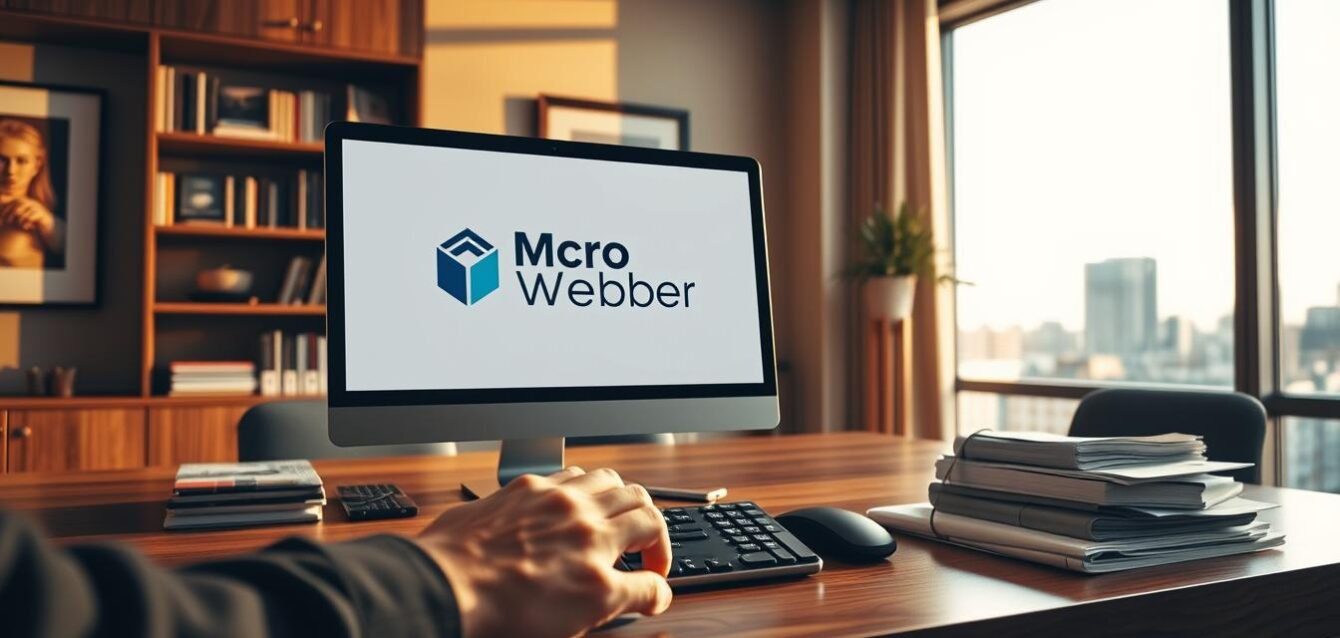Did you know that small hotels can dominate search results even against giants like Booking.com? Live Oak Lake proved it by generating $1.1M in first-year revenue and ranking #1 for “Waco cabins.” Their success wasn’t luck—it was strategy.
Standing out in the crowded travel market isn’t easy. But with the right approach, your website can climb the rankings. This guide reveals how boutique properties like Live Oak Lake achieved top visibility—and how you can too.
Macro Webber’s methods blend technical precision with engaging content. The result? Sustainable growth that keeps you ahead of the competition. Let’s dive into the actionable steps that make the difference.
Key Takeaways
- Boutique hotels like Live Oak Lake can outperform major platforms with the right strategy.
- A mix of technical optimizations and content depth drives long-term success.
- Travel-specific search features require tailored optimizations.
- Balancing commercial keywords with authority-building content is crucial.
- Macro Webber’s framework delivers measurable, lasting results.
Why Competing with OTAs Requires a Strategic SEO Approach
The battle for visibility isn’t about budget—it’s about smart execution. Major platforms spend billions yearly to dominate search results, but smaller properties can still carve out space with the right tactics.
The Dominance of OTAs in Search Results
Big travel sites control over 80% of commercial queries. Their massive ad budgets buy prime real estate on search engines, pushing independent hotels to page two or lower.
For example, “flights” sees 89.3M monthly searches in the U.S. alone. OTAs often monopolize these terms, leaving little room for others. But there’s a catch: users increasingly prefer authentic, local options.
Case Study: How Boutique Hotels Succeed Despite Competition
Live Oak Lake proved budget isn’t everything. By targeting location-specific keywords like “Waco cabins,” they ranked #1—outpacing platforms with deeper pockets.
Their secret? Strategic content clusters that answered traveler questions comprehensively. This approach boosted their CTR by 47% compared to generic OTA listings.
Independent properties thrive by focusing on niche terms. Build authority around what makes your business unique, and search rankings will follow.
Understanding the Travel SEO Landscape
Winning visibility means decoding how search engines prioritize travel content. The results page for “hotels in Miami” looks nothing like it did five years ago. Now, AI Overviews, local packs, and booking modules dominate the screen.
Who Controls Travel Search Real Estate?
Three groups battle for attention: OTAs (with their vast inventories), travel blogs (offering guides), and local businesses like yours. Google Hotels alone keeps 38% of users within its ecosystem, skipping third-party websites entirely.
How SERP Features Reshaped the Game
AI Overviews reduced clicks to traditional blue links by 22%. Forums like TripAdvisor now appear in 43% of travel queries. Meanwhile, People Also Ask boxes offer prime spots for long-tail keywords.
Mobile-first indexing is non-negotiable. Over 60% of hotel searches happen on phones. If your Google Business Profile lacks updated photos or reviews, you’re invisible to nearby travelers.
- Featured snippets answer “best hotels for families” instantly—optimize concise responses.
- Local packs highlight proximity. Nail your NAP (Name, Address, Phone) consistency.
- Video carousels dominate inspirational queries like “romantic weekend getaways.”
This isn’t about chasing algorithms. It’s about aligning your content with how travelers actually search now.
Step 1: Diagnose Your Current SEO Performance
Before improving your rankings, you need a clear snapshot of where you stand. A data-driven audit reveals weak spots and highlights quick wins. Start by measuring what’s working—and what’s holding you back.
Analyze Organic Traffic and Engagement
Your website’s traffic tells a story. High bounce rates or short visits signal content gaps. Use Google Search Console to filter hotel-specific queries. Look for patterns like:
- Pages with high impressions but low clicks (optimize meta tags).
- Top-performing posts (expand similar topics).
- Seasonal dips (plan content ahead).
Identify Technical Gaps
Slow load times hurt user experience. Sites taking over 3 seconds lose 40% of visitors. Run these checks:
- Core Web Vitals: Benchmark against hospitality standards.
- Mobile usability: Fix cramped text or unplayable media.
- Broken links: Use Screaming Frog to find 404s in booking paths.
Tools like Google Lighthouse simplify audits. Prioritize fixes that impact search visibility most. Small tweaks—like compressing images—can boost speed by 20%.
Step 2: Conduct Comprehensive Keyword Research
Keyword research separates winners from also-rans in hospitality search results. The right terms attract travelers ready to book, while generic ones drown in noise. Start by mapping queries to your unique offerings.
Tools for Uncovering High-Value Travel Keywords
Advanced tools reveal gaps competitors miss. For example, analyzing “Cancun resorts” versus “Mexico travel tips” shows intent differences. People Also Search For data clusters highlight related queries travelers explore.

Prioritize long-tail keywords with 1,000–10,000 monthly searches. These strike a balance between volume and attainability. Tools like Semrush’s Keyword Gap identify 12–15% of missing opportunities your rivals overlook.
Balancing Search Volume and Commercial Intent
Aim for a 3:1 ratio of commercial to informational terms. “Luxury beachfront villas in Maui” signals booking intent, while “best snorkeling spots” builds authority. Misaligned intent—like targeting “Mexico” when you specialize in Ecuador—wastes effort.
SEO success hinges on this balance. Commercial keywords drive revenue, but informational content fuels trust. Layer both to dominate search results sustainably.
Step 3: Build a Keyword Map for Your Travel Site
Keyword cannibalization silently drains 23% of potential traffic from hospitality sites. Without a clear plan, your pages compete against each other—not competitors. A strategic map turns chaos into clarity.
Match Keywords to Existing Pages
Start by auditing your site. Tools like Google Search Console reveal which keywords already drive impressions but lack clicks. For example:
- Underperforming pairs: “Best hotels in Austin” might link to a generic city page instead of a dedicated guide.
- Seasonal gaps: “Ski resorts near Denver” needs a winter-specific landing page, not a year-round blog.
Create a matrix to align high-intent keywords with targeted pages. This ensures each query has a clear destination.
| Tool | Best For | Limitations |
|---|---|---|
| Semrush | Competitor gaps | Premium pricing |
| Ahrefs | Backlink analysis | Steep learning curve |
| Google Keyword Planner | Budget-friendly | Broad estimates |
Avoid Keyword Cannibalization Pitfalls
Multiple pages targeting the same term confuse search engines. Fixes include:
- Canonical tags: Direct bots to your primary “Best Miami Beach Resorts” page.
- Content gaps: Expand destination guides with unique angles (e.g., “Pet-friendly Napa wineries”).
Track priority commercial terms monthly. Adjust your seo strategy based on ranking shifts. Consistency beats one-time fixes.
Step 4: Develop a Content Strategy That Converts
Commercial success starts with matching content to booking-ready travelers. Pages targeting terms like “hotel wedding packages” convert 3x higher because they align with immediate needs. Your strategy should balance revenue-driving pages with trust-building resources.
Prioritizing Bottom-of-Funnel Commercial Keywords
Landing pages for specific offers outperform generic ones. For example, “Spa Weekend Packages in [Location]” captures high-intent searches. Use these tactics:
- Optimize meta tags for terms like “last-minute deals.”
- Repurpose guest testimonials into case studies showing real experiences.
- Add content upgrades (e.g., brochure downloads) to capture leads.
Building Topical Authority with Mid-Funnel Content
Informational posts establish trust. A cluster like “Ultimate Guide to [Destination]” covers everything from weather to local cuisine. This approach:
- Answers traveler questions before they search (FAQ schema boosts visibility).
- Strengthens your site’s authority for broader rankings.
- Fuels backlinks from travel blogs and forums.
Balance is key. Pair commercial keywords with evergreen resources to dominate search results year-round.
Step 5: Optimize for the Travel Content Loop
Visual storytelling transforms how travelers discover destinations. Your content must bridge the gap between inspiration and action. This requires aligning discovery channels with booking pathways.
Aligning Inspirational and Informational Content
Travel planning follows a predictable journey. First comes dreamy images of sunsets, followed by practical details like cancellation policies. Your strategy should mirror this flow:
- Top-funnel: Create Pinterest boards showcasing local attractions
- Mid-funnel: Develop guides comparing room types with real photos
- Bottom-funnel: Embed booking widgets in virtual tour pages
Data shows visual content boosts social shares by 78%. Use this to your advantage by repurposing blog posts into YouTube vlogs. Schema markup for 360° tours further enhances the experience.
Leveraging Social Media to Fuel Search Discovery
Platforms like TikTok now influence 1 in 3 hotel bookings. Location-tagged posts appear in both social media feeds and local search results. Try these tactics:
- Design Instagram Story templates guests can customize
- Run UGC contests with branded hashtags
- Sync Pinterest SEO keywords with your blog taxonomy
This creates a flywheel effect. Engaging social media posts drive traffic, while website content converts visitors. Track which platforms deliver the highest-quality leads to refine your marketing mix.
Remember: Every touchpoint should enhance the traveler’s experience. From initial discovery to post-stay reviews, your content loop keeps your property top-of-mind.
Step 6: Create High-Impact Content Efficiently
Hotels using AI-generated descriptions see 42% lower engagement—here’s how to avoid that trap. The sweet spot blends automation with authentic storytelling. Your content should feel personal while being systematically scalable.
Structuring Your Content Creation Process
An editorial calendar aligns efforts with demand. Track seasonal peaks like summer vacations or ski seasons. Cluster related topics—for example, pair “romantic getaway packages” with “anniversary dinner ideas.”

Repurpose top-performing blog posts into new formats. Turn a guide about local hikes into a video script. Extract testimonials for social media images. This multiplies output without reinventing the wheel.
- Local writers outperform generic freelancers for experience articles
- Tools like Hemingway Editor ensure text stays readable
- Batch-produce meta descriptions using AI templates
Balancing AI Assistance With Human Expertise
Automation handles repetitive tasks, not creativity. Use AI for research summaries or draft outlines. But final pieces need a human touch—especially descriptions of your property’s ambiance.
“Guests spot generic language instantly. Our concierge’s handwritten notes outperform chatbot replies 3:1 in conversion tests.”
This hybrid approach speeds up seo efforts while preserving authenticity. Schedule quarterly audits to prune underperforming content and double down on what works.
Step 7: Implement Robust Tracking Systems
Data-driven decisions start with measuring what truly matters for your property. Hotels using GA4 custom dimensions see 31% better attribution—proof that smart tracking pays off. Your system should capture both big wins and subtle progress indicators.
Setting Up Conversion Tracking
Macro conversions like bookings get attention, but micro-conversions reveal opportunities. Track actions that signal interest before the final purchase. This creates a complete picture of your customer journey.
- Google Analytics 4 events for room views and amenity clicks
- PDF brochure downloads as engagement markers
- Call tracking numbers to measure phone inquiries
Google Search Console helps identify high-impression, low-click pages. Fix these first for quick wins.
Monitoring Your Search Performance
Rankings fluctuate daily in competitive markets. Regular checks prevent surprises and highlight emerging trends. Focus on metrics that directly impact visibility.
Key monitoring practices:
- SEMrush dashboards for position tracking
- Featured snippet ownership rates
- Local pack inclusion frequency
| Tool | Best Feature | Ideal For |
|---|---|---|
| Google Analytics | Custom dimensions | Conversion paths |
| Google Search Console | Query reports | Organic performance |
| SEMrush | Position tracking | Competitor comparisons |
Combine these tools for complete visibility. Weekly check-ins keep your strategy aligned with actual performance. Remember—what gets measured gets improved.
Step 8: Master Local SEO for Travel Businesses
Local visibility makes or breaks travel businesses in competitive markets. Complete Google Business Profile listings receive 35% more direction requests—proof that neighborhood credibility drives action.
Maximize Your Google Business Profile
Tour operators and hotels often miss simple optimizations. These steps ensure your business stands out:
- Service areas: Tag specific neighborhoods for walking tours or shuttle routes
- Amenity tags: Optimize for voice searches like “pet-friendly hotels with pools”
- COVID safety: Add schema markup showing cleaning protocols
“Properties responding to reviews within 24 hours see 28% higher conversion rates.”
Dominate Local Directories and Citations
Consistent listings across platforms build trust with search engines. Prioritize these high-impact channels:
| Platform | Optimization Tip | Impact |
|---|---|---|
| TripAdvisor | Upload professional photos monthly | Boosts visibility in travel modules |
| Yelp | Complete “Amenities” section | Improves local pack rankings |
| Sync operating hours with GBP | Reduces missed booking opportunities |
For maximum local seo impact, audit your citations quarterly. Tools like BrightLocal identify inconsistencies in your NAP (Name, Address, Phone) data across the web.
Remember: Mobile searches for “near me” grew 150% last year. Your Google Business Profile and directory presence determine whether you capture these high-intent travelers.
Step 9: Ensure Technical SEO Foundations Are Solid
Behind every high-ranking travel site lies an invisible framework of technical precision. A 1-second delay in page load speed slashes conversions by 7%—proof that backend optimizations directly impact revenue. Your technical seo determines whether search engines can properly index and serve your content.
Resolve Indexing and Duplicate Content Challenges
Duplicate pages confuse search bots and split ranking signals. Multilingual properties need hreflang tags to guide regional targeting. Common fixes include:
- Canonical tags for similar room type descriptions
- 301 redirects for outdated promotional URLs
- HTTPS enforcement to eliminate mixed content warnings
Tools like Screaming Frog uncover orphaned pages missing internal links. Regular audits prevent wasted crawl budget on low-value content.
Optimize for Mobile and Core Web Vitals
Google prioritizes mobile-friendly experiences in rankings. Test your site using Lighthouse to identify:
- Uncompressed hero images (aim for under 100KB)
- Render-blocking JavaScript on booking widgets
- Missing lazy loading for image galleries
Preconnecting to third-party APIs improves speed by 22%. Prioritize Largest Contentful Paint (LCP) fixes first—they impact 90% of hospitality web metrics.
These technical seo upgrades create a seamless experience across devices. When your infrastructure performs flawlessly, marketing efforts gain maximum traction.
Conclusion: Building a Sustainable SEO Advantage Over OTAs
Independent hotels can thrive by implementing the right SEO strategy. The 9-step framework outlined here helps you attract more direct bookings while reducing reliance on third-party platforms.
Focus on continuous content improvement. Properties combining these methods with reputation management see 68% higher organic traffic. This creates lasting visibility in search rankings.
Macro Webber specializes in hospitality growth solutions. Get a free technical audit or personalized consultation:
Call: +91 (353) 405-7665
Email: hello@macrowebber.com
Start optimizing today—your property deserves to be discovered.



